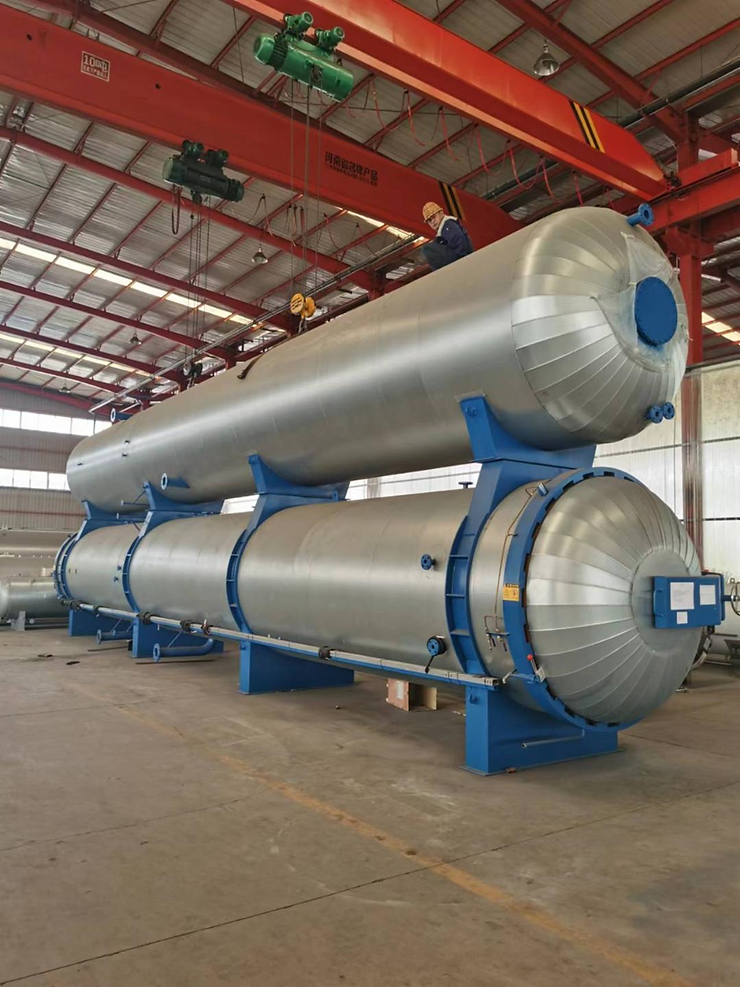Advantages of the MASPELL Brand Wood Vacuum Drier
- HIMKI Pusat

- Feb 23, 2024
- 3 min read
Updated: Jul 1, 2024
The principle of vacuum kiln drying, basically, is to put the wood in a closed container and dry it at less than atmospheric pressure. The advantages of vacuum drying are shorter kiln drying cycles, better kiln drying quality, more energy saving and also environmentally friendly.
(1) Shorter Drying Cycles — The key to shorter drying cycles or faster drying times is to increase the speed at which water moves from the center of the wood toward the surface. Among the many factors that influence this speed, resistance from the surrounding air is the largest. With vacuum technology, as the wood is being heated, the moisture within the wood is drawn out through the vacuum system at the same time. As the amount of air is reduced and the resistance of the surrounding air is reduced at the same time, moisture is drawn out to form the wood at an increased rate, thereby speeding up the kiln drying process.
(2) Better Kiln-Drying Quality — In a vacuum environment, water vapor evaporates at a much lower temperature. Therefore, wood can be dried at lower temperatures than conventional kilns, thereby reducing the possibility of defects resulting from high temperature drying, such as internal checks, cracks, etc.
In addition, because the pressure inside a room is always lower than atmospheric pressure, there is less air in the environment, which also means less oxygen; and with little oxygen, no small amount of change causes discoloration of the wood. Furthermore, as a result of the vacuum environment, the moisture within the wood moves at a much faster rate to the surface. As a result, there is also a lesser chance of case hardening developing on the surface of the wood as well.
(3) More Energy Efficient — When compared to conventional kilns, vacuum drying with this Maspell wood vacuum drier can reduce drying cycles by 3 to 5 times — This is especially noticeable among thicker and more difficult to dry species. Additionally, due to the vacuum environment, water vapor evaporates at a much lower temperature. In other words, less energy is required. Vacuum drying, therefore, is more energy efficient.
(4) Environmentally Friendly — Vacuum drying requires space to be tightly packed and all dirt resulting from the drying process can be contained and collected more easily. As a result, vacuum drying is also more environmentally friendly.
Please contact : ABADIMAS – Email: budhi_hartono@yahoo.com – H/P: 0816999197


Wood Durability, Wood Durability Classes, and Wood Preservation Methods
What is wood durability? Wood durability is the resistance of a particular type of wood to various wood-destroying factors. Usually what is meant is resistance to biological destructive factors, such as fungi, insects (especially termites and dry wood dust), and marine animals.
Thus, the term "wood durability" generally refers to the resistance of wood to these organisms. Simply put, based on the estimated duration of wood use in various conditions and its resistance to termites and dry wood dust, in Indonesia there are five durability classes, namely class I which is the most durable to class V which is the least durable.
Wood that is durable when used under a roof, will not necessarily be durable when used outside and in contact with damp soil. Wood used in mountainous areas, its high durability will be reduced if used in lowlands. Likewise, wood that is durable in North America will not necessarily be durable if used in tropical areas.
Wood durability is the main factor determining the use of wood in construction. No matter how strong a type of wood is, its use will be meaningless if its durability is low. A type of wood that does not have good shape and strength for building construction will not be used if the construction will only last a few months, unless the wood is properly preserved first.
The best way to preserve wood is with the Vacuum and Pressure method with a Wood Treatment Plant machine as in the attached photo
For more information, please contact:
ABADIMAS
Phone No.: 0816999197
Email: budhi_hartono@yahoo.com


















Comments